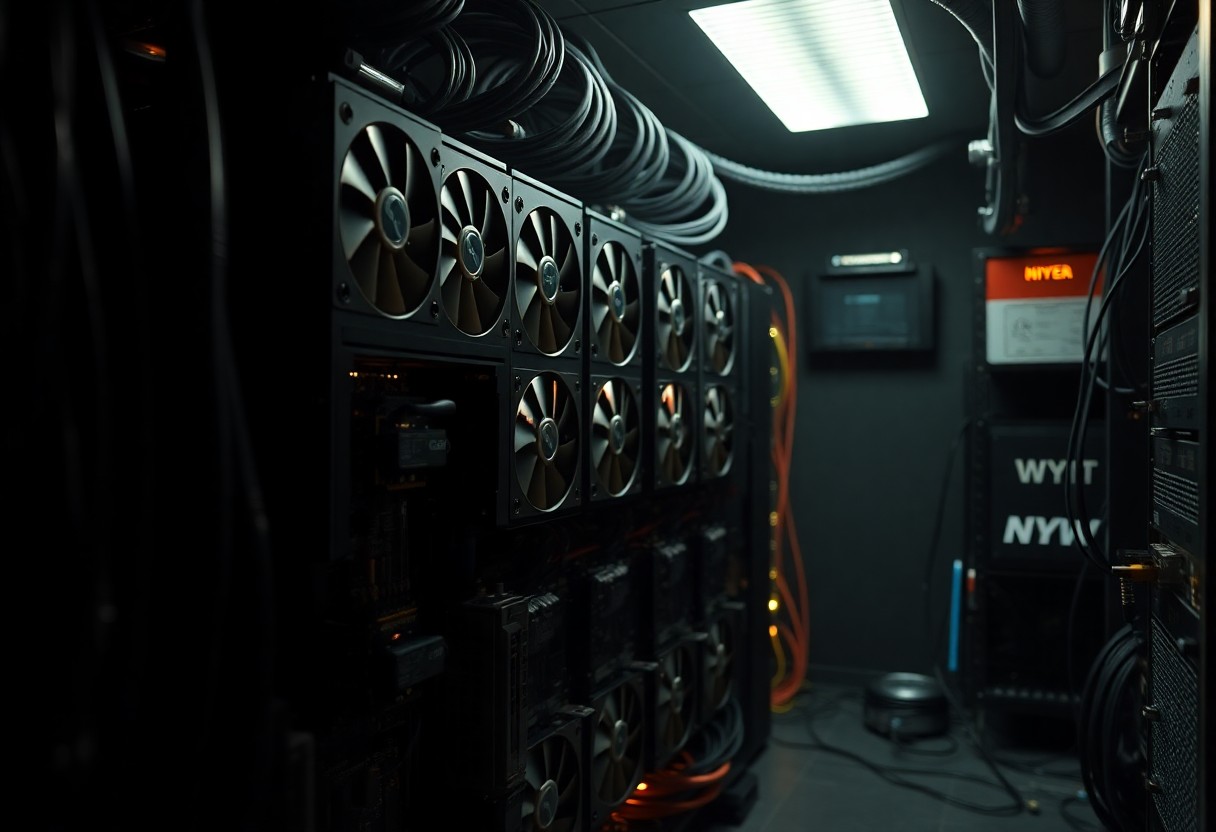What Is Crypto Mining and Can You Still Make Money From It?
Many individuals are intrigued by crypto mining, a process that validates transactions on blockchain networks and generates new cryptocurrencies. If you are considering venturing into this world, it’s vital to understand the high energy costs and potential risks involved. However, with the right strategies and a solid understanding of market trends, you can still profit from crypto mining. This post will guide you through the basics of mining, the profitability landscape, and what you need to consider before making your investment.
Understanding Crypto Mining
A crypto mining is the process by which transactions are verified and added to the public ledger of a cryptocurrency, known as the blockchain. Through this process, miners use their computing power to solve complex mathematical problems, which in turn secures the network and validates transactions. As a reward for their efforts, miners receive newly minted coins and transaction fees from users. This incentivizes individuals to contribute their hardware and electricity resources to maintain network stability and integrity.
What is Crypto Mining?
Crypto mining involves the use of specialized hardware to compete against other miners in solving cryptographic challenges. When a miner successfully solves a problem, they get the right to add a new block to the blockchain, which contains a list of recent transactions. Consequently, this process not only generates new coins but also ensures the reliability of the cryptocurrency network by preventing double-spending and fraud.
The Technology Behind Mining
Above all, the technology behind mining leverages blockchain architecture, which relies on a consensus mechanism, primarily Proof of Work (PoW), to validate transactions. This requires substantial computational power, leading to competition among miners who race to solve mathematical algorithms. The mining process is resource-intensive, often necessitating the use of high-performance GPUs or ASICs, which can involve significant energy consumption and financial investment in hardware.
To fully grasp the technology behind mining, you need to understand how decentralized networks function. Each miner maintains a copy of the blockchain and participates in validating transactions, making the system resistant to manipulation. However, be aware that equipment costs, electricity expenses, and the potential for poor returns on investment can pose significant risks. Staying informed about market trends and mining difficulty adjustments is key for success in this space.
The Economics of Crypto Mining
Assuming you are considering entering into the world of crypto mining, it’s vital to grasp the economic factors that significantly impact your venture. The profitability of mining largely depends on a variety of cost factors that include electricity costs, hardware expenses, maintenance fees, and network difficulty rates. By analyzing these aspects, you can evaluate whether your mining operation will yield financial success or drain your resources.
Cost Factors in Mining
Crypto mining isn’t just about buying hardware and getting started; it’s also about understanding the ongoing costs that come with it. The key cost factors you should consider include:
- Electricity consumption – Mining rigs can consume a significant amount of power.
- Hardware investment – Costs can vary widely depending on the equipment you choose.
- Cooling systems – Essential for maintaining operational efficiency and extending the life of your hardware.
- Pools and fees – If you join a mining pool, there may be fees that impact your returns.
Perceiving these cost factors may help you make informed decisions and maximize your potential for profit.
Potential Profitability
Between the ever-fluctuating crypto market and the associated costs of mining, assessing your potential profitability requires a clear understanding of several variables. These variables include the current value of the cryptocurrency you are mining, your hardware’s hashing power, and the overall mining difficulty. By calculating your potential earnings against your expenses, you can determine whether mining is a viable option for generating income.
Potential profitability in crypto mining hinges on your ability to navigate the market effectively. Analyzing the current prices of cryptocurrencies and adjusting your strategy accordingly can yield positive outcomes, but be aware of the inherent risks. High electricity costs and rapidly increasing mining difficulty can also threaten your profits, making it vital to keep track of these elements carefully. Each decision you make can lead to profitable outcomes or significant losses, so always assess your approach to maximize your returns.
The Current Landscape of Crypto Mining
Some investors are re-evaluating their strategies in crypto mining as the market continues to evolve. As energy costs rise and competition increases, many are turning to alternative methods and technologies that enhance efficiency. Miners are increasingly investing in renewable energy sources to mitigate electricity expenses, while also looking toward high-performance hardware to improve their operational capabilities.
Some miners are also adapting to the changing regulatory landscape by exploring cloud mining services. This allows you to rent mining power from large data centers, reducing your initial setup costs and risks associated with hardware maintenance. As the market matures, trends toward more decentralized mining pools have emerged, encouraging smaller miners to collaborate for profitability and sustainability.
Trends in the Market
Above all, the crypto mining sector is embracing technological advancements and innovation. The increasing popularity of proof-of-stake and alternative consensus mechanisms has shifted focus away from mining in some networks, making it imperative for you to stay informed about which cryptocurrencies still rely on traditional mining. Additionally, advancements in ASIC miners are enabling smaller operations to remain competitive against large-scale operations, thus redefining your approach to mining profitability.
The trend towards localization of mining operations is gaining traction, where you might consider setting up mining rigs closer to renewable energy sources. This can offer substantial cost savings and improve sustainability practices, aligning your business with eco-friendly principles while still maximizing financial returns.
Regulatory Considerations
The crypto mining environment is increasingly influenced by regulations within various jurisdictions. The recent crackdowns in several countries on energy-intensive mining operations highlight the importance of ensuring compliance with local laws. You need to be aware of the potential implications of regulations, as they can affect your operational costs and viability in the market.
For instance, some governments impose tax responsibilities or require mining operations to use a certain percentage of renewable energy, which may increase your initial investment but can lead to a more sustainable and potentially lucrative business model in the long run. Understanding these regulations will help you navigate the complexities of the market, ensuring that your mining activities remain viable and compliant.
Types of Crypto Mining
Once again, it’s important to understand the various types of crypto mining available to you. Different mining methods can suit your needs, equipment, and desired level of investment. Here are the main types:
| Proof of Work | Requires computational power to solve complex problems. |
| Proof of Stake | Involves validating transactions based on the quantity of cryptocurrency held. |
| Cloud Mining | Allows you to rent mining power from a data center. |
| GPU Mining | Uses graphics processing units, often more efficient than CPU mining. |
| ASIC Mining | Utilizes specialized hardware for specific cryptocurrencies. |
Any of these options can impact your profitability and overall success in the crypto mining landscape, depending on your strategy and setup.
Proof of Work vs. Proof of Stake
Against the backdrop of ever-evolving technologies, the debate between Proof of Work (PoW) and Proof of Stake (PoS) systems continues to gain traction among enthusiasts and investors. PoW requires miners to solve complex mathematical problems, ensuring network security but consuming substantial energy. In contrast, PoS allows validators to confirm transactions based on the number of coins they hold, making it a much more energy-efficient solution.
Your choice between PoW and PoS can significantly affect your operational costs and potential returns. PoW offers high rewards but at a cost of resource-intensive mining, whereas PoS is less taxing on the environment and provides steady income, depending on your holdings.
Cloud Mining Options
After exploring traditional mining methods, you may find cloud mining options attractive for their accessibility and reduced hardware requirements. This method involves purchasing or renting mining equipment housed in a remote data center, allowing you to earn without the complexities of setup and maintenance. Still, it is crucial to research the providers to ensure their legitimacy and avoid scams.
In addition, cloud mining can offer diverse contracts enabling flexibility in your investment. While it poses lower upfront costs, watch for any hidden fees that may cut into your profits. Thoroughly vet providers and analyze their track records to avoid potential pitfalls while capitalizing on the growing crypto market.
Tips for Aspiring Miners
Keep your focus on the necessarys when starting your crypto mining journey. Your initial setup can determine your overall profitability and sustainability. Consider the following points:
- Research the most profitable coins to mine.
- Understand the energy costs associated with mining.
- Join mining pools to reduce risk and increase rewards.
- Stay updated on market trends and changes.
- Evaluate your local regulations regarding cryptocurrency mining.
Thou should equip yourself with knowledge and a clear plan to enhance your mining experience.
Choosing the Right Hardware
On your quest for profitable mining, selecting the right hardware is paramount. You will need to assess factors such as your budget, the specific crypto you intend to mine, and the power consumption of the hardware. High-performance ASIC miners are often necessary for Bitcoin, while GPUs can be more effective for altcoins. Look for hardware with a favorable hash rate to energy consumption ratio to maximize your returns.
On top of that, ensure your mining rig is built to handle the specific demands of the coin you choose. This includes compatibility with the mining software and the capacity to endure long hours of operation. By aligning your hardware with your mining strategy, you can significantly increase your chances of success.
Best Practices for Efficiency
To optimize your mining operation, focus on implementing best practices for efficiency. Start with cooling solutions to prevent hardware overheating, which can lead to lower performance and potential failures. Additionally, ensure that you have a stable internet connection, as downtime can negatively impact your earnings. Regularly monitoring your equipment will help identify any issues promptly, keeping your operation running smoothly.
Further, consider using mining management software to track your hashrate, energy consumption, and overall profitability. Make use of overclocking techniques cautiously to boost performance without sacrificing stability. Also, take advantage of renewable energy sources if they are available to you, as this can significantly reduce operational costs and enhance your environmental footprint. Always approach your setup with careful planning; thou must strive for efficiency in every aspect of your mining venture.
Common Myths About Crypto Mining
All too often, misconceptions about crypto mining can cloud your understanding of this evolving field. One prevalent myth is that mining is only for tech-savvy individuals with powerful computer setups. In reality, many user-friendly solutions allow you to mine cryptocurrency without requiring extensive technical knowledge. Another common belief is that crypto mining guarantees profit. However, factors like fluctuating market prices, energy costs, and mining difficulty can significantly impact your earnings.
Debunking Misconceptions
With the growing interest in crypto mining, some misconceptions have emerged that need clarifying. One major myth is that you can mine cryptocurrencies on any regular computer and still expect substantial rewards. In truth, mining most current cryptocurrencies requires specialized hardware, known as ASICs or high-performance GPUs, to stand a chance against other miners. Furthermore, the idea that mining is an eco-friendly activity is misleading, as it can be energy-intensive depending on your setup and local energy sources.
Realities vs. Expectations
On the other hand, some expectations surrounding crypto mining are not rooted in the reality of today’s market. Many newcomers think that once they set up their mining rig, they’re guaranteed to generate income effortlessly. This oversimplification can lead to disappointment when you discover the significant investment in hardware, electricity, and ongoing maintenance costs involved. The profitability of your mining efforts can also be impacted by market volatility and network changes.
But as you explore the potential of crypto mining, it’s necessary to evaluate your initial investment, operational expenses, and potential returns realistically. The narrative that mining is an easy path to wealth often overlooks the substantial risks and technical challenges that can arise. Being well-informed about these realities can help you make wise decisions and set achievable goals in your mining adventure.
Final Words
On the whole, crypto mining remains a significant aspect of cryptocurrency networks, allowing you to validate transactions and earn rewards in the form of digital assets. As technology evolves, mining has become more complex, requiring substantial investment in hardware and electricity. Despite these challenges, you can still find opportunities for profitability, depending on your willingness to engage with the latest trends, optimize your setups, and possibly explore into alternative methods such as cloud mining or staking.
To maximize your potential earnings, it’s vital to stay informed about market conditions, mining difficulty, and the energy costs associated with mining in your area. By conducting thorough research and carefully assessing your resources, you can navigate the intricacies of crypto mining and position yourself effectively in the digital currency landscape. Your approach may vary, but with the right strategies, you can still turn a profit in this dynamic environment.







